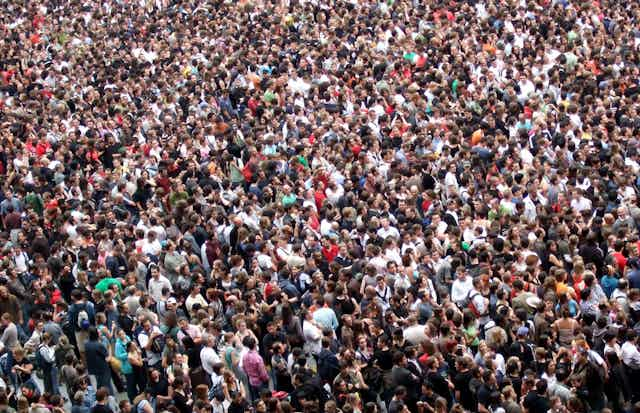Global population trajectories put us at nine billion people by 2050. Our demand for natural resources, particularly water, food and energy, will only rise in the coming decades.
With this in mind, how do we ensure that all people have access to jobs and clean energy while protecting the environment?
How do we continue to lower the burden of poverty for communities and ensure that everyone has sufficient water, nutrition and shelter, while not threatening the health of our oceans or exacerbating land degradation?
How do we move away from a system of production where our first-world consumption patterns rely on lower employment standards and environmental degradation elsewhere?
The UN now believes that the future must be paved with a new generation of “sustainable development goals” as a way of doing things better, for all.
Since the turn of the century, the global development framework has been guided by a set of eight development-oriented goals with a series of measurable targets. While some progress has been made in achieving these “millennium development goals”, the 2015 deadline for completion is fast approaching. We need a post-2015 framework.
Last year’s Rio+20 conference was touted by many as a failure of leadership and vision, but at least it decided to establish a set of post-2015 sustainable development goals. But no inroads have been made on what these might be or seek to achieve.
What can we learn from the millennium development goals and what might we need post-2015?
The millennium development goals have had some successes but this is not uniform; most countries will fall short of reaching them by the 2015 deadline. The rate of progress in meeting all eight goals has been both unevenly distributed between and within different regions and across the 21 targets and 60 indicators.
While this makes it hard to accurately assess rates of progress for each goal, some broad-brush assessments show that goals 6 (“combat HIV/AIDS, malaria and other diseases”) and 8 (“develop a global partnership for development”) are tracking close to the rate required to meet the 2015 deadline.
Greater efforts need to be directed to those goals not entirely on track, including goal 1 (“eradicate extreme poverty and hunger”), 2 (“achieve universal primary education”), 3 (“promote gender equality and empower women”), 4 (“reduce child mortality”), 5 (“improve maternal health”) and 7 (“ensure environmental sustainability”).
We have learned some things from this 15-year process though; things to consider as we pave a new development agenda and make sure the new goals don’t fall at the same hurdles.
Intermediate targets need to be set to monitor progress. This goes hand in hand with the need to ensure that data are up-to-date and available for effective decision-making. More successful engagement with civil society organisations, particularly in Africa, Central and South America and Asia, is paramount. Many of these organisations have little voice at international meetings (compared with larger northern-based groups). They have an intimate local understanding of issues concerning poverty, inequality and environmental conservation; we should be listening to them.
There needs to be a more serious financial commitment from rich countries for these sustainable development goals to see the light of day. In 2000, rich countries pledged to commit 0.7% of their gross national income to implement the millennium development goals, but only a few countries have ever met this UN target.
The private sector needs to get involved in technology transfer as it is companies (not governments) that own the intellectual property on many technologies, such as wind turbines, that would allow for the development of a low-carbon economy.
We also have to re-think how we can curb our current levels of consumption. The millennium development goals were aimed at poor countries exclusively, and yet in the global north, our consumption of our natural resources has remained unchecked and soared to around double the levels of 1990.
Sustainability, as the name of the goals suggests, needs to be part of each goal. The goals should also reflect the major human rights conventions that lay the foundations for people’s rights to safe and adequate food and water, livelihoods and subsistence, health, adequate housing and medical care, effective participation in planning and decision-making, security and culture. So what might these goals actually be?
Given the sluggish progress made towards achieving the millennium development goals, surely we would not just want them extended. We need new goals with vision, and based on equity. Ending poverty for all needs to be one, as does ensuring sustainable food and water security, and providing access to health services and clean energy for all. Ecosystems must be restored and conserved. The world must move towards low-carbon energy systems and create sustainable urban areas. Good governance is critical to the success of all the above, and as such should be a goal in itself. Such a wish list could go on forever, highlighting the difficult job faced by the UN and others over the coming years to reach a consensus.
Sustainable development is still touted on the international stage as a way humans can thrive while maintaining ecosystem function and health. Given the convergence of alarming concerns about climate change, poverty, population growth, and rising frequency of economic instability, natural disasters and conflict, maybe a new set of goals will be our last chance to get it right.

